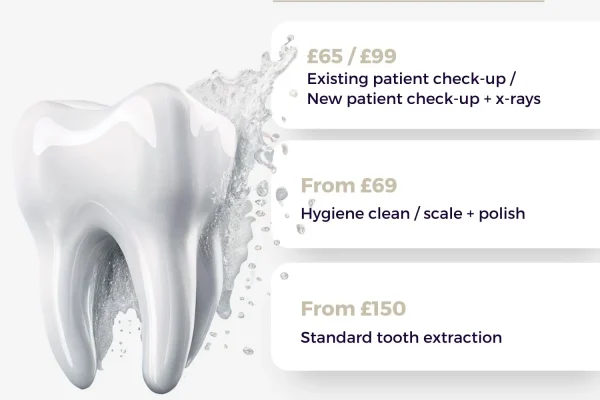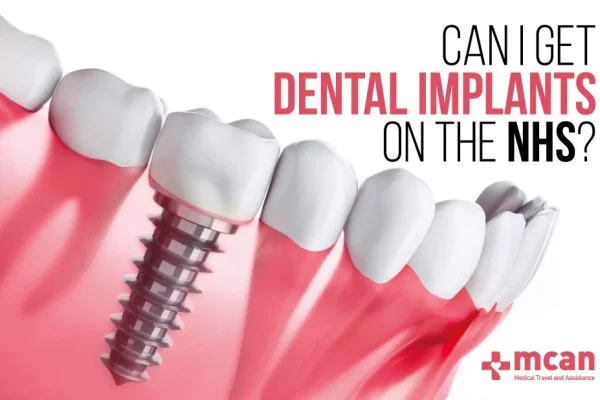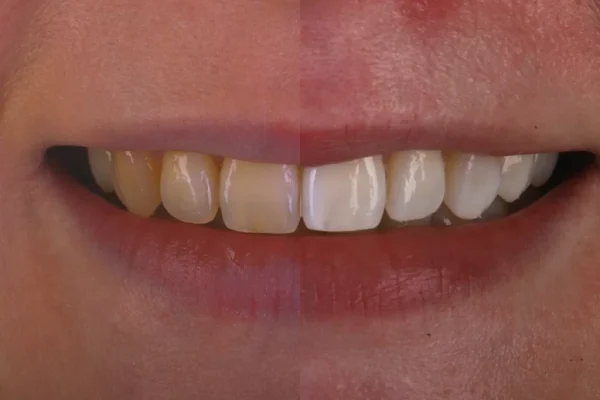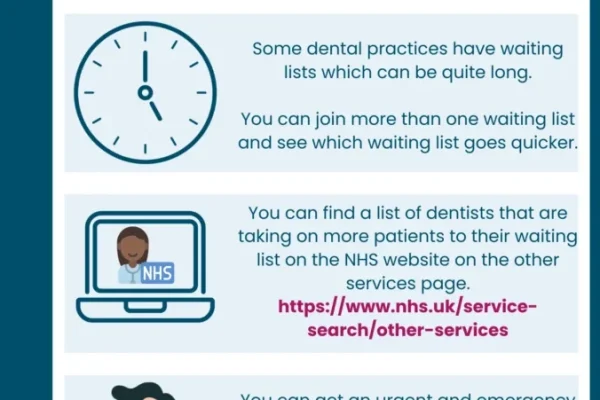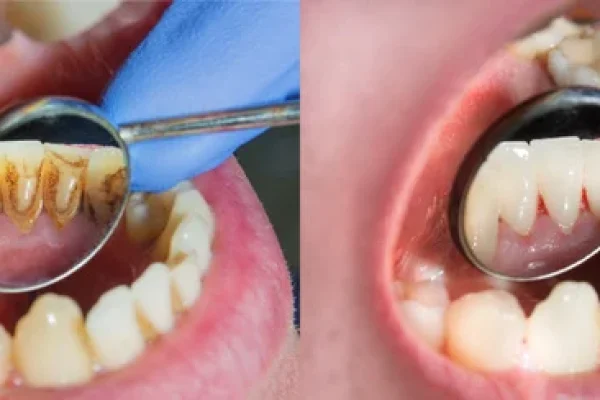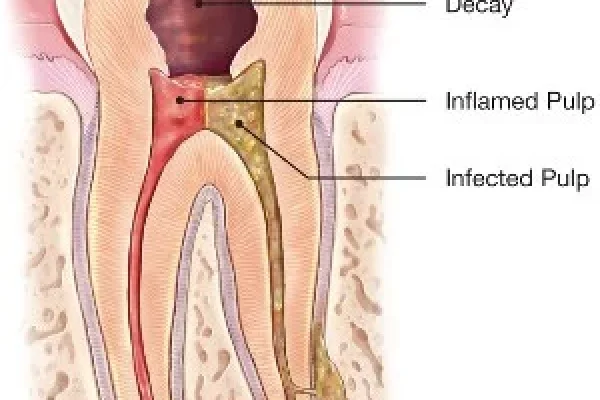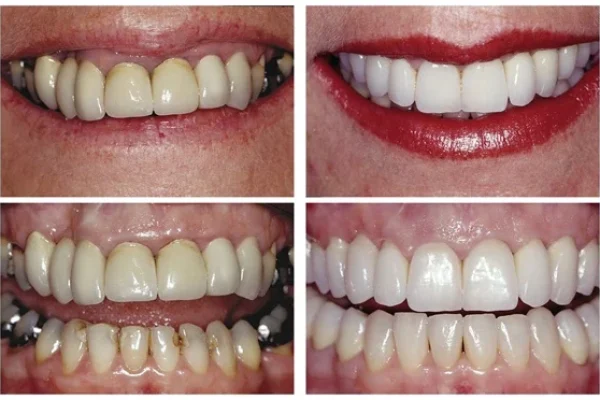
Key Takeaways
-
- Understanding **root treatment cost uk** is vital for managing expectations and finances.
-
- Costs vary significantly between **NHS** and **Private** dental treatment.
-
- NHS root canal treatment is a fixed **Band 2** charge (£76.00 in England, Apr 2024), but the final restoration (like a crown) is often a separate **Band 3** charge (£328.00 in England, Apr 2024).
-
- Private root canal costs typically range from £500 to £1,500+ *per tooth*, depending on complexity and location.
-
- Key factors influencing private costs include tooth complexity (front vs. back), practitioner’s expertise (general dentist vs. specialist), and geographical location.
-
- The cost of the root canal procedure itself almost *never* includes the essential final restoration (filling or crown).
- Private practices often offer payment plans to help manage costs.
How Much Does root treatment cost uk on Average?
Alright, let’s get straight to it: the million-dollar question, or perhaps more accurately, the several-hundred-pound question. Pinning down a single, definitive average for root treatment cost uk is a bit like trying to herd cats – they’re everywhere, they vary wildly, and just when you think you’ve got a handle on it, one darts off in a completely unexpected direction. However, we can talk in ranges, typical figures, and the fundamental factors that push that price needle up or down. Generally speaking, for a standard case undertaken by a general dental practitioner on the private side, you’re likely looking at anywhere from £500 to £1,500 *per tooth*. Yes, per tooth. This isn’t a flat fee for sorting out whatever ails your mouth that day; it’s specific to the individual tooth needing the procedure. Now, this is just a broad stroke average. Simpler cases, like a straightforward front tooth (an incisor or canine, which usually has just one root canal), might sit towards the lower end of that scale. More complex teeth, specifically the molars at the back of your mouth with their multiple, often curved, and intricate canal systems, will inevitably be at the higher end. The term “root treatment” itself is interchangeable with “root canal treatment” or the more technical “endodontic treatment.” They all mean the same thing: removing the infected or damaged nerve and blood vessels from inside the tooth, cleaning and shaping the space, and then filling it to prevent future infection. When you see terms like `cost of a root canal uk`, `root canal treatment price`, `how much is a root canal uk`, or `rct cost` (RCT being the common abbreviation for Root Canal Treatment), they’re all pointing to this same procedure. This initial range is just the starting point for private treatment; the NHS offers a fundamentally different cost structure, which we’ll dive into next. It’s crucial to understand that this average is just a guide; your actual cost will depend heavily on the factors we’re about to explore, making personalised quotes from your dentist absolutely essential.
Comparing root treatment cost uk: NHS vs Private Options
When faced with the prospect of a root canal in the UK, you essentially have two distinct pathways available, each with its own set of benefits, drawbacks, and crucially, costs. Navigating the **root treatment cost uk** means understanding the fundamental differences between accessing care through the National Health Service (NHS) and opting for private dental treatment. The most significant difference, immediately apparent to most, is the price tag. NHS treatment is heavily subsidised by the government, meaning the patient contribution is capped at a set charge, regardless of the complexity of the root canal itself (within a specific banding). This makes it a far more accessible option financially for many people across the country. However, this lower cost often comes with potential trade-offs. Waiting times for non-emergency root canal treatment on the NHS can sometimes be lengthy, depending on local service availability and demand. Furthermore, your choice of dentist might be limited to the practice you’re registered with, and while NHS dentists are skilled professionals, complex cases might not always be referred to a specialist endodontist within the NHS framework, or such referrals might involve even longer waits. The materials used and techniques employed might also differ between NHS and private practices, though the goal of saving the tooth remains the same. On the flip side, private dental treatment offers greater flexibility and potentially quicker access to care. You have the freedom to choose your dentist, including seeking out practitioners with specific expertise, such as a specialist endodontist who focuses exclusively on root canal treatments. Private practices often utilise the latest technologies, like dental operating microscopes, which can be invaluable for navigating the intricate anatomy of root canal systems, particularly in complex teeth. The trade-off here is the cost, which is significantly higher than the NHS fee and is dictated by the market rate set by the individual practice, factoring in overheads, equipment, staff costs, and the practitioner’s expertise. Keywords like `How Much Does a Root Canal Cost? NHS vs Private` perfectly encapsulate this core comparison. Choosing between the two depends on your personal circumstances, financial situation, urgency of the need, and your priorities regarding speed, choice of provider, and technology used. It’s a decision that requires weighing up immediate financial outlay against potential waiting times and the level of specialisation you might desire for your treatment.
How Much is a Root Canal on the NHS?
For those in England accessing dental care via the NHS, understanding the charging structure is relatively straightforward, though the exact figures can change annually (it’s always best to check the latest NHS dental charges on the official website). Root canal treatment, a procedure aimed at saving a tooth by removing infected pulp, cleaning, and filling the root canals, falls squarely into Band 2 of the NHS dental charge bands. As of the most recent updates, the cost for a Band 2 treatment is a fixed fee, currently £76.00 in England (as of April 2024 – always verify the current price). This single charge covers a multitude of potential treatments needed within that course of care, including examination, diagnosis (which would have been covered in a preceding Band 1 charge if it was a separate appointment), radiographs (X-rays) taken during the treatment, scaling and polishing if clinically necessary, fillings, and the root canal treatment itself. So, if you go in for a root canal, the standard NHS fee you pay for that course of treatment will be the Band 2 charge. However, and this is a critical point often missed by patients, the Band 2 fee typically covers the root canal procedure itself and a temporary or basic filling to seal the access cavity drilled into the tooth. It generally does not cover the cost of a permanent restoration, such as a final composite filling or, more commonly and often recommended after a root canal, a crown. If your dentist advises that a crown or other complex restoration is necessary to protect the weakened tooth after the root canal is complete (and this is very frequently the case, especially for back teeth), this subsequent procedure will likely fall into Band 3, which is the highest NHS charge band, currently £328.00 in England (as of April 2024 – again, check official sources for the absolute latest price). Therefore, while the root canal procedure itself is covered by the Band 2 fee, the total cost for saving and restoring the tooth might involve paying both Band 2 and Band 3 charges across two separate courses of treatment. It’s also worth noting that dental charge bands and their specific costs can differ slightly in Wales, Scotland, and Northern Ireland, so it’s essential to check the relevant national health service guidelines for those regions. Keywords like `Root canal cost NHS`, `Cost of a Root Canal on the NHS`, and `NHS dental charges` are directly relevant to understanding this capped, government-subsidised pricing structure, which offers a vital, affordable option for many.
How Much Does a Private Root Canal Cost in the UK?
Stepping away from the fixed, capped costs of the NHS, the private dental sector in the UK presents a much wider, and generally higher, spectrum of prices for root canal treatment. When you ask `How Much Does a Private Root Canal Cost in the UK?`, the honest answer is, “It varies enormously.” Unlike the standardised NHS fees, private dentists set their own prices, which are influenced by a multitude of factors, leading to significant differences not just between practices in different cities, but sometimes even between practices within the same town. As a broad rule of thumb, you might expect a private root canal on a front tooth (simpler case) to range anywhere from £500 to £900, while a complex molar case could easily run from £800 to £1,500, and potentially much higher if treated by a specialist endodontist or in a high-cost location. These figures are typically quoted *per tooth*, and sometimes costs are broken down further by the number of canals treated within that tooth (e.g., a molar with four canals might cost more than a premolar with two). The `private root canal cost` is heavily influenced by *who* is performing the treatment. A general dental practitioner will typically charge less than a registered specialist endodontist, who has undergone years of advanced training and limits their practice exclusively to root canal procedures. Specialist fees often reflect this higher level of expertise, experience, and the use of advanced equipment like dental operating microscopes, which aren’t standard in all general practices. The `cost of root canal treatment private uk` is also significantly impacted by the geographical location of the practice. Practices in major cities, particularly London and the affluent South East, generally have higher overheads (rent, staff wages, etc.) and higher demand, which translates into steeper fees compared to practices in smaller towns or less expensive regions of the country. The complexity of the case itself is another major determinant; a straightforward case might be completed relatively quickly, while a tooth with calcified, blocked, or severely curved canals could take multiple longer appointments, requiring more time, skill, and specialised instruments, all of which increase the overall `private dental treatment cost`. When seeking private treatment, it is absolutely crucial to obtain a detailed, written estimate before agreeing to proceed, outlining the expected costs for the root canal procedure itself and discussing potential additional costs, such as the final restoration (filling or crown), which is almost always a separate fee. This variability means research and consultation are key to understanding the specific `root canal private cost` for your situation.
Why is root treatment cost uk So Expensive? Factors Influencing Price
It’s a common reaction when presented with the bill for a root canal: a sharp intake of breath, a raised eyebrow, and the inevitable question, “Why is a root canal so expensive in the UK?”. Let’s break it down, because understanding the why makes the cost feel less arbitrary and more justifiable. Firstly, and perhaps most importantly, root canal treatment is an incredibly complex and technically demanding procedure. It’s not like a simple filling or extraction. The inside of a tooth, where the pulp (nerve and blood vessels) resides, is a labyrinth of tiny canals – sometimes straight and wide, often curved, narrow, branching, and calcified. Navigating these intricate, often microscopic pathways requires immense skill, precision, and experience. This isn’t entry-level dentistry; it’s specialist-level work, even when performed by a general dentist. You are paying for years of training, continuous professional development, and the accumulated expertise to handle delicate tissues and complex anatomy within the confines of a tooth root. Secondly, the procedure requires a significant investment in specialised equipment and materials. Standard dental tools aren’t sufficient for modern, high-quality endodontics. Dentists performing root canals often use sophisticated equipment like dental operating microscopes (which magnify the tiny canals), ultrasonic instruments to clean and shape the canals, electronic apex locators to measure the length of the canals precisely, and a range of flexible nickel-titanium files to shape even curved canals. The filling materials used are also specific to root canal treatment, such as gutta-percha and sealers, which are packed tightly into the cleaned spaces. This technology and these materials are expensive to purchase, maintain, and use. Thirdly, root canal treatment is time-consuming. While a simple case might be completed in one appointment, more complex teeth, retreatments (when a previous root canal has failed), or teeth with anatomical challenges often require multiple, lengthy appointments. This dedicated chair time, requiring the dentist and a dental nurse, is a significant cost factor for the practice. Finally, like any business, dental practices have substantial overheads. Rent, utilities, staff salaries (including highly trained dental nurses), insurance, sterilisation protocols, waste disposal, and ongoing training all contribute to the operational costs that must be factored into the price of treatments offered. So, the `Factors Influencing the Cost of Root Canal` boil down to a combination of exceptional skill and experience, specialised high-tech equipment, significant chair time dedicated to the procedure, and the general overheads of running a modern dental practice. It’s an investment in saving your natural tooth, which, in the long run, is almost always preferable and often less expensive than extraction and subsequent replacement options like bridges or implants.
Do Different Teeth Cost More for Root Canal Treatment?
Absolutely, yes, the specific tooth requiring the root canal treatment is one of the most significant determinants of the final cost, both in the NHS and especially in private practice. This difference in pricing is directly linked to the internal anatomy of the tooth – specifically, the number of root canals it contains and the complexity of those canals. Think of it like plumbing: dealing with a single, straight pipe is simpler and quicker than tackling a system with multiple branching, curved, and narrow pipes. Front teeth, such as incisors and canines, are generally the simplest cases. They typically have just one root and, consequently, one root canal. This single canal is usually relatively straight and wide, making it easier and faster for the dentist to access, clean, and fill. As a result, root canals on these teeth are usually the least expensive. Moving further back in the mouth, premolars (the teeth between your canines and molars) often have one or two roots and one or two canals, although some can have more complex anatomy. The complexity and time involved start to increase here, and so does the cost compared to front teeth. Finally, we get to the molars, the large grinding teeth at the very back of your mouth. These are the workhorses, and anatomically, they are the most complex. Molars typically have two or three roots and commonly contain three or four root canals, although variations are frequent, and some can have even more or possess incredibly intricate, curved, or calcified canal systems. Treating molars requires more time, more skill, more specialised instruments (like different file sizes and types), and often requires the use of magnification (like loupes or a microscope) to locate and navigate all the canals effectively. Therefore, molars are almost always the most expensive teeth to treat with a root canal. The keyword `Do different teeth cost more for root canal treatment?` highlights this crucial point. Dentists’ fee structures, particularly in private practice, often reflect this anatomical reality, with separate fees for incisors/canines, premolars, and molars, with molars commanding the highest price due to their inherent complexity and the increased resources (time, skill, materials, equipment) required to treat them successfully.
Does Location Affect the Cost of Root Canal Treatment?
Yes, absolutely. Just as the price of housing, a pint, or a loaf of bread can vary significantly across the United Kingdom, so too can the cost of dental treatment, including root canals. The `Comparing Prices: Regional Variations` is a very real phenomenon in private dentistry. If you’re looking at `Root Canal Treatment Cost London, UK`, prepare for potentially steeper fees compared to clinics in, say, the North of England, parts of Wales, or Scotland. The primary driver for these geographical price differences is the cost of running a dental practice in different locations. Rents for practice premises are significantly higher in prime city centre locations, particularly in the South East and London. Staff wages also tend to be higher in areas with a higher cost of living to attract and retain skilled professionals. Additionally, demand for private dental services can sometimes be higher in more affluent areas, which can also influence pricing. While the core procedure and the materials used might be the same, the underlying operational costs of the practice in different regions necessitate different fee structures. Think of it as the price premium you pay for services in areas with higher economic activity and property values. This means that if you were to compare the cost of a root canal on a specific tooth (say, a lower molar) at a general practice in central London versus a general practice in a market town in the Midlands or a village in the North, you would very likely find the London price to be considerably higher. While national chains might offer slightly more standardised pricing, independent private practices often reflect their local economic conditions in their fee scales. Therefore, when budgeting for a private root canal, where you live, or are willing to travel for treatment, can play a significant role in the final `private root canal cost`. It’s why you might see discussions or articles highlighting “the five most expensive places for root canal treatment” (likely dominated by London and the South East) or conversely, “the five cheapest places for a root canal treatment in the UK” (potentially in regions with lower overheads).
What is the Most Expensive Part of a Root Canal?
When people ask `What is the most expensive part of a root canal?`, they might be picturing a specific file, a single injection, or perhaps the final filling material. However, the cost of a root canal isn’t typically itemised down to each individual component or step within the procedure. The fee you are quoted, whether NHS (within the band) or private, is generally for the entire course of treatment required to clean, shape, and fill the root canal system of the affected tooth. Therefore, there isn’t a single ‘most expensive part’ in terms of materials used or specific individual actions. Instead, the factors that drive up the overall expense relate to the complexity of the case and the expertise required to treat it successfully. If you’re looking for the primary cost driver, it’s the sheer difficulty presented by the tooth itself. A tooth with multiple, severely curved, calcified (narrowed by deposited calcium), or blocked canals takes significantly more time, requires highly specialised instruments, demands a higher level of skill and patience, and often necessitates the use of expensive equipment like a dental operating microscope. Dealing with these anatomical challenges, finding hidden canals, or negotiating past obstacles is what consumes time and requires advanced training, and that’s what translates into a higher cost. If the treatment requires seeing a specialist endodontist, their fee will be considerably higher than that of a general dentist, reflecting their additional years of post-graduate training and exclusive focus on this complex field. So, while they might use specific expensive files or materials, the cost isn’t just for those items; it’s for the endodontist’s ability to use them effectively to treat the most challenging cases that a general dentist might not be equipped or comfortable handling. In essence, the ‘most expensive part’ isn’t a material object; it’s the combination of complexity, time, skill, and technology brought to bear on a difficult clinical situation. It’s paying for the successful navigation of a dental minefield to save your tooth.
What is Included in root treatment cost uk? Procedure & Associated Costs
Understanding exactly what is covered by the **root treatment cost uk** quoted by your dentist is crucial to avoid surprises down the line. Whether you’re paying the NHS Band 2 fee or a private practice’s price, the quoted cost for the “root canal” or “root treatment” procedure typically covers the core endodontic process itself. This usually includes the necessary diagnosis and planning (though the initial examination fee might be separate), administering local anaesthesia to numb the area, creating an access cavity through the tooth’s crown to reach the pulp chamber and root canals, removing the infected or damaged pulp tissue, cleaning and shaping the canals using various instruments (like files and irrigation solutions) to prepare them for filling, and finally, filling and sealing the root canal system with a biocompatible material (most commonly gutta-percha and a sealer) to prevent bacteria from re-entering. Necessary X-rays taken during the root canal procedure to check progress and canal lengths are also usually included within the treatment fee. The goal is to sterilise and seal the internal space of the tooth. The keywords `What Happens During a Root Canal Procedure and How Much Does It Cost?` and `Understanding Root Canal Treatment Costs` directly relate to this breakdown of the procedure and what’s encompassed in the fee. However, and this is a significant point of potential confusion, the cost quoted for the root canal rarely includes the final, permanent restoration of the tooth’s crown. Once the root canal is completed and the access cavity has been sealed, the tooth structure is often weakened, either by the original decay or trauma, or by the access cavity itself. A restoration is needed to protect the tooth from fracture and restore its function and appearance. This might be a large filling, an onlay, or most commonly, a crown. These restorative procedures are considered separate treatments and therefore incur separate costs. While a temporary filling might be placed in the access cavity as part of the root canal fee, the permanent filling or crown will be an additional expense, one that is often essential for the long-term success and survival of the root-treated tooth. It’s vital to clarify with your dentist exactly what the quoted price includes and, importantly, what it doesn’t, particularly regarding the final restoration.
Is the Crown Covered in the Cost of the Root Canal?
Let’s be absolutely crystal clear on this point, as it’s one of the most frequent sources of misunderstanding and unexpected expense: No, the crown is almost never covered in the cost of the root canal procedure itself. Whether you have your root canal done on the NHS or privately, the fee for the root canal treatment is distinct and separate from the fee for the final restoration, particularly if that restoration is a crown. The root canal treatment deals with the inside of the tooth – cleaning and sealing the root canal system. A crown, on the other hand, is a prosthetic covering or “cap” that fits over the top of the tooth, restoring its shape, strength, function, and appearance. Think of the root canal as fixing the foundations and internal structure of a building, while the crown is the new roof and external walls needed to protect and make the building functional again. There’s a very important clinical reason why a crown is often recommended after a root canal, especially for back teeth (premolars and molars). Teeth that have undergone root canal treatment, particularly those that have had large fillings or decay prior to the procedure, can become more brittle and are significantly more prone to fracture compared to vital (live) teeth. Chewing forces, especially on back teeth, are substantial, and without adequate protection, the remaining tooth structure can split or break, potentially leading to the loss of the tooth despite the successful root canal. A crown encircles and reinforces the tooth, acting like a protective helmet that holds the weakened structure together. Because the crown is a entirely separate procedure, requiring tooth preparation, impressions, laboratory fabrication (in most cases), and a separate fitting appointment, it carries its own distinct cost. On the NHS, a root canal is a Band 2 treatment, while a crown is a Band 3 treatment. Privately, the cost of a crown can range from several hundred pounds to well over a thousand, often equalling or exceeding the cost of the root canal itself, depending on the material used (e.g., porcelain, zirconia, metal) and the complexity. The keywords `Is the crown covered in the cost of the root canal?` and `Demystifying Root Canal & Crown Costs` highlight this common point of confusion. Always budget for the likely need for a crown or substantial onlay after a root canal, especially on a weight-bearing back tooth; it’s a vital step in ensuring the long-term survival of your newly saved tooth.
Understanding root treatment cost uk: Payment Options & Affordability
Coming face-to-face with the potential **root treatment cost uk** can be daunting, particularly for private fees which can run into hundreds or even over a thousand pounds per tooth, plus the subsequent cost of a crown. However, requiring a root canal often isn’t something you can put off indefinitely; the underlying infection or inflammation won’t resolve on its own and can lead to worsening pain, abscesses, and eventually, tooth loss. So, how can you manage these costs and explore options for affordability? Firstly, communication with your dental practice is key. Before agreeing to treatment, ask for a detailed, written estimate covering both the root canal procedure and the likely subsequent restoration (e.g., a crown), including the costs for each. Don’t be shy about discussing the fees and asking for clarification. Many private dental practices understand that significant treatment costs can be a financial strain and offer various payment options to help patients manage the expense. One common option is offering **dental payment plans** or financing facilities. These might include interest-free credit options spread over a period of months or longer-term financing plans through third-party medical finance companies, often subject to a credit check. Keywords like `Paying monthly for root canals` relate to these types of financing solutions. These plans allow you to spread the cost of the treatment over time, making it more manageable within your monthly budget rather than requiring a large lump sum upfront. If you have private dental insurance or are part of a dental plan (different from payment plans, these are insurance policies or membership schemes where you pay a regular premium/fee), check the terms and conditions carefully. Some dental insurance policies provide a contribution towards the cost of restorative treatments like root canals and crowns, although there might be annual limits, waiting periods, or excesses to pay. NHS costs, while lower, must also be paid upfront at the start of a course of treatment (unless you are exempt from NHS charges). For private treatment, always enquire about the practice’s payment terms – do they require full payment upfront, payment per appointment, or do they offer staged payments? Understanding your options and discussing them openly with the practice manager or receptionist beforehand can alleviate stress and help you budget for this essential dental work. While the cost is a significant consideration, delaying necessary treatment due to financial worries can often lead to more extensive, expensive, and painful problems later. Exploring payment options can make the vital step of saving your tooth achievable.
Frequently Asked Questions About root treatment cost uk
Navigating the world of dental fees, especially for complex procedures like root canals, inevitably leads to questions. Here, we address some of the most common queries about the **root treatment cost uk**, drawing upon the details we’ve already explored to provide clear and concise answers that summarise the key points and help you understand what to expect financially when you need a root canal. These FAQs cover the core cost differences, the reasons behind the expense, and variations depending on the tooth involved. Understanding these basics is fundamental to feeling informed and empowered when discussing your treatment plan and its associated costs with your dental professional, whether you’re a new patient or have been attending the same practice for years. Getting a handle on these common points of confusion can make the whole process feel far less daunting and ensure you are prepared for the financial commitment involved in saving your tooth. We’ll reiterate the general price ranges and the factors that cause them to fluctuate, providing a quick reference guide to the most important aspects of root canal pricing across the UK dental landscape, covering both the NHS and private pathways, and touching upon the inherent complexity that justifies the investment required for this skilled endodontic work aimed at preserving your natural dentition for the long term, avoiding the potentially higher costs and complexities of tooth replacement down the line.
How much does a root canal cost in the UK?
The cost of a root canal in the UK varies significantly depending on whether you choose NHS or private treatment, the complexity of the tooth, and the practice’s location (for private care). On the NHS in England, root canal treatment falls under the Band 2 charge, which is a fixed fee (£76.00 as of April 2024, always check the latest official figures). This covers the procedure itself and related necessary work within that course of treatment. Privately, costs are much higher and variable, typically ranging from £500 to £1,500 or more *per tooth*. Simpler front teeth are less expensive, while complex back molars with multiple canals are significantly more. These private costs reflect the expertise of the dentist (general dentist vs. specialist endodontist), the technology used, and the practice’s overheads. So, there’s no single answer, but rather a wide spectrum depending on your chosen route and the specifics of your case.
How Much Does a Private Root Canal Cost in the UK?
A private root canal in the UK will generally cost substantially more than the NHS equivalent, with prices fluctuating based on several key factors. You can typically expect to pay anywhere from approximately £500 for a straightforward single-rooted tooth treated by a general dentist, up to £1,500 or even considerably higher for a complex multi-rooted molar treated by a specialist endodontist, particularly in high-cost areas like London. The specific cost will depend heavily on the dental practice you choose, its location (cities, especially London, tend to be more expensive), the difficulty of the individual case (number of canals, curvature, calcification), and the qualifications of the practitioner. Always obtain a detailed, written estimate from the private practice before commencing treatment to understand the exact private root canal cost for your specific tooth and situation.
How Much is a Root Canal on the NHS?
On the NHS in England, root canal treatment is included within the Band 2 charge of the NHS dental fee structure. As of April 2024, the fixed cost for a Band 2 course of treatment is £76.00 (please verify current prices with official NHS sources). This fee covers all necessary treatment included in Band 2, such as fillings, extractions, and, crucially, the root canal procedure itself, including any required X-rays taken during treatment. However, it’s important to remember that this Band 2 fee typically *does not* include the cost of the final, permanent restoration for the tooth, such as a crown. If a crown is needed after the root canal (which is often the case for back teeth), this will fall under the higher Band 3 charge (£328.00 as of April 2024 in England), which is a separate cost incurred at a later stage.
Why is a root canal so expensive in the UK?
The cost of root canal treatment in the UK, particularly in the private sector, reflects the complexity, skill, time, and technology required for the procedure. It’s a highly intricate form of microsurgery performed inside the tooth. Dentists require extensive training and experience to perform root canals successfully. The procedure often involves using expensive, specialised equipment like dental operating microscopes, ultrasonic devices, and sophisticated file systems not typically needed for simpler treatments. Root canals can also be time-consuming, often requiring one or more lengthy appointments. Furthermore, private practice costs factor in significant overheads such as rent, staff salaries, materials, and equipment maintenance. These combined factors contribute to the relatively high cost of saving a tooth through root canal treatment, especially when compared to basic procedures like fillings or extractions.
Do Different Teeth Cost More for Root Canal Treatment?
Yes, definitively. The cost of root canal treatment is strongly influenced by which tooth is being treated, specifically due to the number and complexity of its root canals. Teeth at the front of the mouth (incisors and canines) typically have just one root and one canal, making them the simplest and least expensive to treat. Premolars, located between the front and back teeth, often have one or two canals and usually fall into a mid-range cost bracket. Molars, the large chewing teeth at the back, are the most complex, commonly having two or three roots and containing three or four or even more root canals, which are often curved and difficult to access. Treating molars requires more time, skill, and specialised instruments, making them the most expensive teeth for root canal treatment. Private fee structures almost always differentiate pricing based on tooth type (front, premolar, molar) to reflect this variation in complexity..














